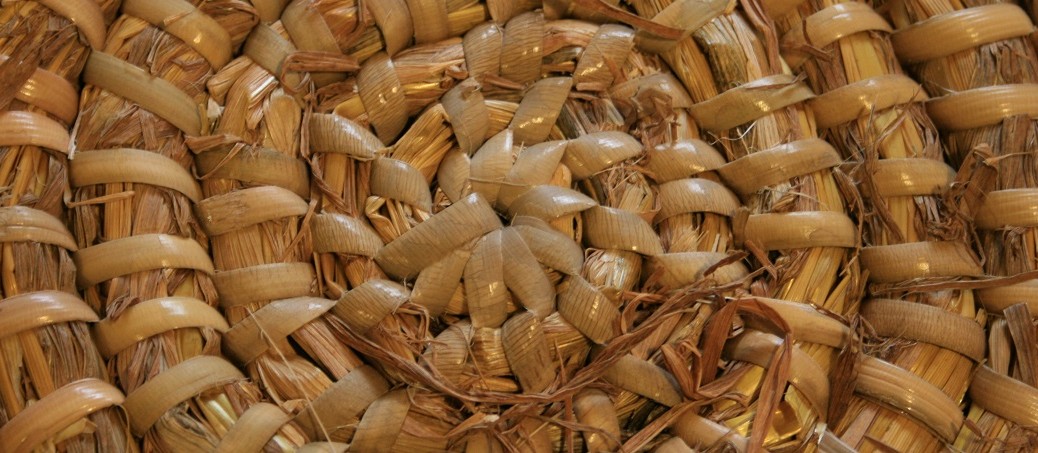The straw skep is a familiar part of the beekeeper’s equipment. Nowadays they are used primarily to gather summer swarms and winter cobwebs but in the past, skeps were used to hive bees all year round.
Origins
The word skep is thought to have come from an Icelandic Norse word skeppa meaning a straw basket. Their original purpose was as a half-bushel grain measure. Saxon beekeepers are thought to have been hiving bees in skeps since early Christian times. They came to Britain after the Romans left, around 400 A.D. and they brought their skeps with them. Presumably they came to Ireland at about the same time.
Before skeps the only purpose-made hive in these parts was the alveary: a sharply conical willow or hazel basket weatherproofed with a layer of green cow manure mixed with ashes or lime. The word alveary has Latin roots but despite these origins there is no evidence that the alveary was a Roman invention.
Although eventually superseded by the skep, the process was not immediate and the alveary was still being used by some beekeepers into the 19th century. The earliest mention of skeps in Ireland was in the 500’s when they were used by the beekeeping St Gobhnait, head of a convent at Ballyvourney, Cork who drove off cattle thieves by hurling skeps of bees at them.
Skep-beekeeping
Having no built-in floor, skep hives were placed on either rush mats or hardwood platforms to keep out the cold. In addition they were often tucked into purpose-made alcoves in stone walls known as bee-boles. In winter, straw was stuffed around the sides for insulation and some bee-boles even had wooden doors which could be closed in foul weather. There is nothing new in the molly-coddling of bees!
Then, as now, beekeepers were fixated with swarming but whereas we are intent on preventing swarming, the skep-beekeepers depended on their bees to swarm and indeed encouraged it by careful choice of the size of the skep – colder and wetter northern and western regions tending towards a smaller skep to ensure the necessary congestion for the native bees.

Throughout the swarming season, beekeepers would catch and hive swarms in vacant skeps, the more the merrier. At the end of the season they would select the heaviest and the lightest of their stocks and suffocate the bees to remove the combs of honey.
The method involved placing skep and bees over a hole in the ground containing either an arrangement of smouldering brimstone-impregnated papers or hot coals over which he would sprinkle ‘flowers of sulphur’ at the appropriate moment. An alternative was to burn dried slices of common puff ball (Lycoperdon giganteum), the fumes of which would stupefy the bees.
The remaining mid-weight hives were taken through the winter for the following year.
An alternative, less destructive method was to ‘drive’ the bees from a full skep into an empty one. The full skep containing honey and bees was turned upside down – the domed top wedged into the top of an iron bucket. An empty skep was then set at an angle to the open end, fixed firmly in place with skewers and the whole arrangement covered with a cloth. The sides of the upturned full skep were then vigorously drummed. The theory was that the drumming noise would drive the bees up out of the full skep and into the empty one leaving the combs of honey behind for the beekeeper.
Into the present
Skep beehives were in common use all the way up until the beginning of the 20th century when the advantages of wooden hives with removable frames based on the bee-space discoveries of Rev. Langstroth in 1851 saw the wooden National and Commercial hives finally take over. Even in the face of this competition, the skep was slow to go and the records of the Cumberland and Westmorland Beekeepers’ Association for 1906 show that 25% of colonies were still housed in skep hives.
Copyright © Beespoke.info 2014. All Rights Reserved.
Click here for the sun hive and how to make your own
Click here for more about Skep Beekeeping
Click here for How to make your own Skep
Click here for more about my skeps or to order a handmade Irish skep
